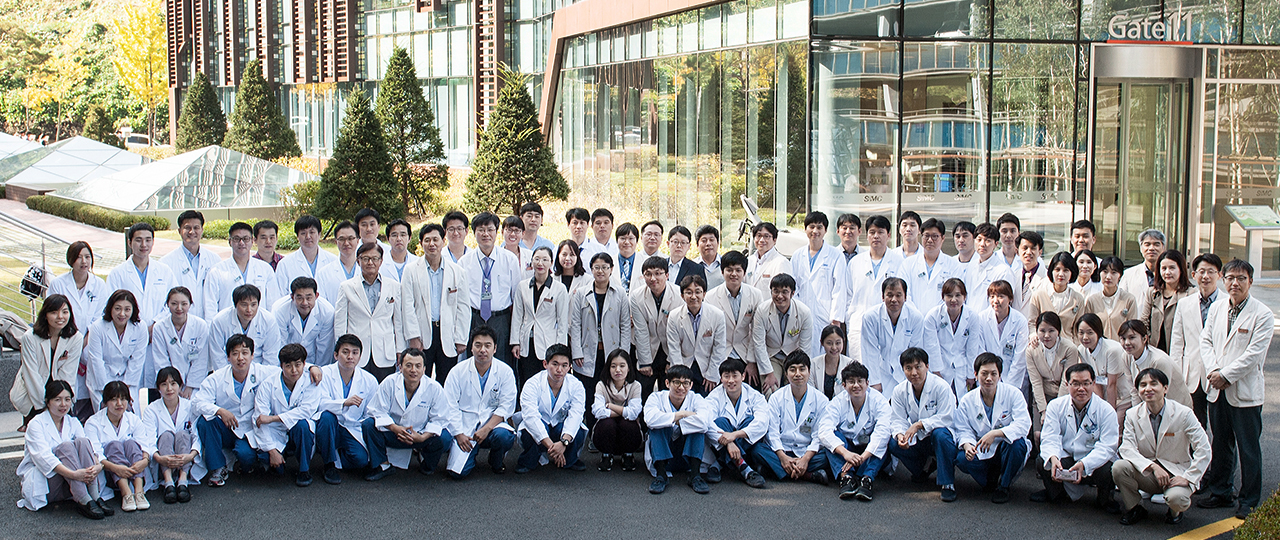射线肿瘤科

三星医学中心放射肿瘤科自其1994年8月首例治疗起截至2015年4月已处理超过50000例新病例。它通过各种类型的癌症中心以多学科方法为基础为各种肿瘤提供最好的治疗。我们提供的不仅是传统的放射治疗,而且还提供高层次的放射治疗,包括图像引导放射治疗(IGRT)、呼吸门控放射治疗(Therapy)、立体定向放射治疗(SBRT)及调强放射治疗(IMRT)。此外,我们将在2015年底配备一台质子治疗设备以将自己定位为癌症治疗的中心,不仅在韩国,而且在国际上。
治疗/临床的主要领域
乳腺癌、妇科肿瘤、结肠癌、泌尿系统肿瘤、肺癌、食管癌、纵隔肿瘤、头颈部癌、淋巴瘤、胃癌、肝癌、胆道癌、小儿肿瘤、血液肿瘤、脑肿瘤、肉瘤和皮肤癌
优势 –各种最新处理方法的应用
1. 图像引导放射治疗(IGRT)和四维呼吸门控放射治疗(Therapy)
三星医学中心放射肿瘤科积极采用各种治疗方案,包括CT、MRI和PET-CT以精确配置治疗目标量,并已安装、并正在运行的磁共振成像机以在质子中心计划放射治疗。此外,对受呼吸影响的肿瘤,如那些肺和肝的肿瘤,我们使用专用于四维放射治疗的四维CT和设备,如Varian iX 和 Novalis TX,以最少化治疗错误。
2. 立体定向放射治疗(SBRT)
这是一个使用三维协调系统通过精确对准目标从不同方向以大量辐射照射小目标的方法。三星医学中心放射肿瘤科采用Novalis-Tx系统,一台立体定向放射治疗装置,以积极治疗肺癌、肝癌和脊柱癌。
3. 调强放射治疗(IMRT)
调强放射治疗是一种“定制的放射治疗”,分级并控制被辐射的单个表面的强度以尽量减少正常组织的照射和选择性地照射肿瘤组织。在三星医疗中心放射肿瘤科,我们不仅有使用直线加速器的调强放射治疗,也有专用于该用途的TomoTherapy和RapidArc系统。
4. 质子疗法
质子治疗装置加速质子,氢原子的原子核,使用一个圆柱形加速器(回旋)来破坏癌组织,并被称为“癌症治疗梦想的设备”。质子束穿过体内而不影响正常组织,并将其最大能量传递给肿瘤组织然后消散。质子治疗可以应用于通过常规的X射线治疗显示出来的所有类型癌症,即使它比传统的放射治疗更有效,但它有较少的并发症。
三星医疗中心计划在2015年底开始质子治疗,而且还计划安装尖端的治疗支持设备,除旋转照射质子治疗系统外。这些包括一个呼吸门控质子治疗系统,该系统跟踪和治疗随呼吸移动的肿瘤,一个调强质子治疗(IMPT)系统,以及锥束实时计算机断层扫描,它使用特别设计的CT扫描在治疗前确定肿瘤。